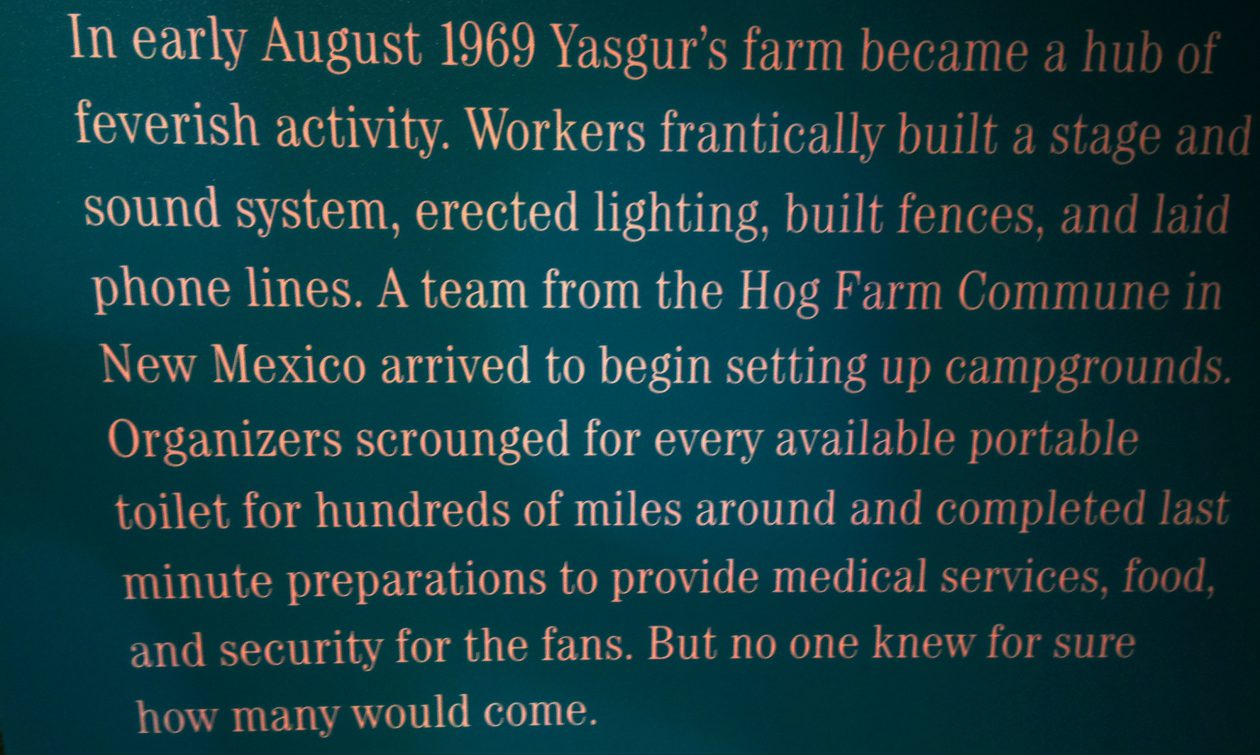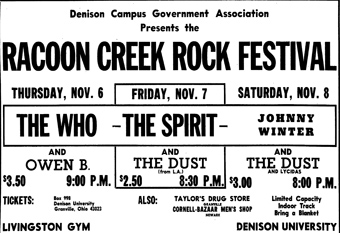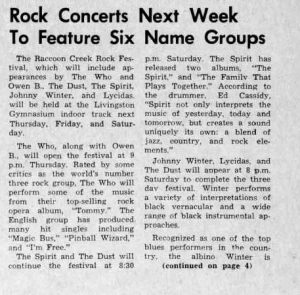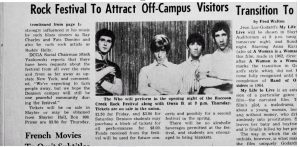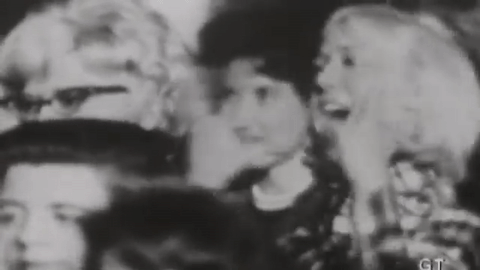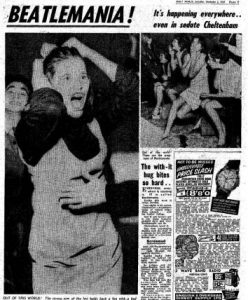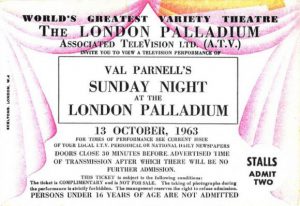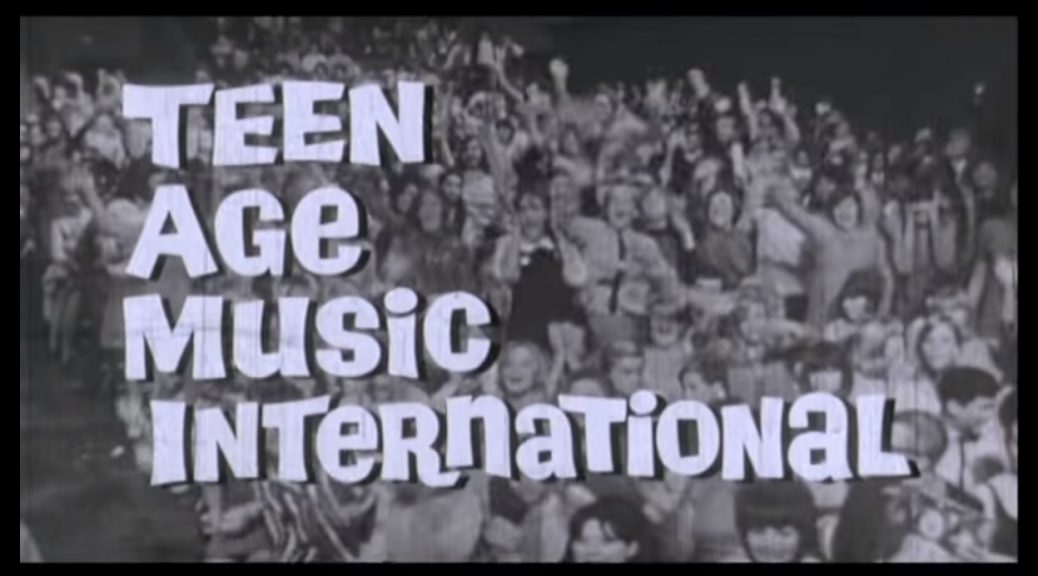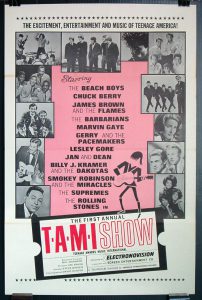Raccoon Creek Rock Festival
at Livingston Gymnasium indoor track of
Denison University
November 6, 7, & 8, 1969
1969 festival #48
Presented by the Denison Campus Government Association, the Racoon Creek Rock Festival was one of the smaller festivals of 1969, but a festival nonetheless. Held indoors at the school’s Livingston Gymnasium indoor track (it was November and it was Ohio, after all).
This is one of those festivals about which not much is known. I’ve tried to contact the Denison newspaper, but received no response. I did find a school newspaper edition from just before the event. It’s humorous to me how the article’s headline described the event as featuring “Six Name Groups.”
Raccoon Creek Rock Festival
Raccoon v Racoon
It’s also interesting to me that the newspaper spells Raccoon with the two “c”s as it is normally spelled, but I find several spots where the second “c” is omitted.
Raccoon Creek Rock Festival
Vague
The newspaper article also fails to say specifically who would play on Friday, yet one of the posters does specify.
The Who and Owen B were scheduled for Thursday. The article also notes that “The English group has produced many hit singles including “Magic Bus,” “Pinball Wizard,” and “I’m Free.”
The article then states that The Spirit (I have only seen them referred to as simply Spirit) and The Dust (ditto) would play on Saturday. The day is a typo and should read Friday as the article continues and states that Johnny Winter, Lycidas, and The Dust would appear on Saturday (also) to complete the 3-day festival.
Raccoon Creek Rock Festival
Johnny “Everywhere” Winter
Winter, it is noted, “performs a variety of interpretations of black vernacular and a wide range of black instrumental approaches.”
Good to know.
Raccoon Creek Rock Festival
Concerns
The writer seems to be somewhat unfamiliar with the line-up, but has the same worries expressed by all who would be in the range of a 1969 festival. After mentioning that there had been outside interest in the event (“as far away as upstate New York”) they go on to say: “We’re expecting to turn people away, but we hope the Denison campus will still be one peaceful community during the festival.”
Raccoon Creek Rock Festival
Great price points
The Who on Thursday cost a ticket-buyer $3.50. The lesser known Spirit only $2.50, but back up a touch for Johnny Winter’s Saturday appearance to $3.00. Student could purchase all three nights for $8.00, a savings of $1.
Raccoon Creek Rock Festival
Looking for more
Thank you to those who have commented below. If anyone else has any information about the festival, I’d love to hear from you.
Raccoon Creek Rock Festival
Next 1969 festival: Palm Beach Pop Festival
